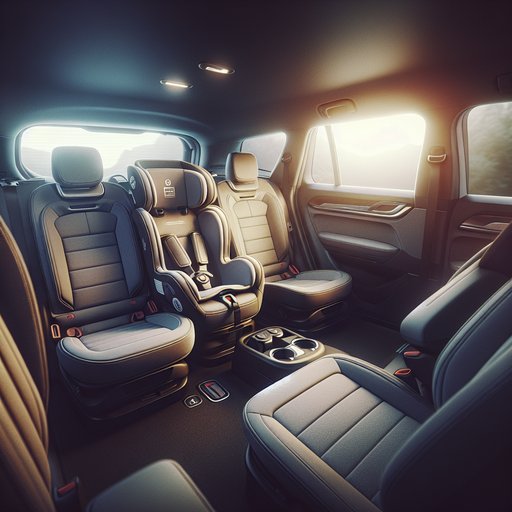
We put the 2024 Honda CR‑V Hybrid Sport Touring AWD through a full family usability test, focusing on installing two ISOFIX/LATCH seats plus a booster, and evaluating anchor access, belt routes, and rear-door opening angles.
Our test vehicle is the 2024 CR‑V Hybrid Sport Touring AWD (204 hp two-motor hybrid, e-CVT). Over a week of school runs and weekend errands, we logged 230 miles with two kids in harnessed seats and one in a booster. Ride quality is compliant on 235/55R19 tires, and we averaged 35 mpg indicated against the EPA’s 37 mpg combined. Cargo behind the second row (39.3 cu ft) easily swallowed a double stroller and diaper bag alongside a small cooler.
For the three-across evaluation, we used two narrow convertibles (Clek Fllo and Graco SlimFit3 LX) in the outboard positions via lower anchors, plus a high-back booster (Graco TurboBooster LX) in the center on the seat belt. Ambient temps were in the mid‑70s F. We measured the rear-door opening at roughly 87 degrees with a digital angle gauge—nearly square to the body—useful when swinging seats in and tightening tethers. Anchor access is straightforward.
The CR‑V provides two sets of lower anchors in the outboard positions (standard 280 mm spacing) marked by fabric tags; they sit slightly recessed but are easy to clip without digging, even with bulky connectors. Three top tether anchors are on the seatbacks, clearly labeled and reachable from the cargo area; routing is simple under the head restraints. Outboard headrests are removable, which helps achieve flat seatback contact for forward-facing installs. As always, mind lower‑anchor weight limits in the Honda manual; switch to a seat-belt install for heavier forward‑facers.
With both outboard seats latched, the center booster fits, but buckle access is the gating factor. The center cushion is narrow with a mild hump; the buckle stalk is short and somewhat flexible, so younger kids may need assistance to click in without tipping the booster. Belt geometry is good: the lap belt sits low on the hips and the shoulder belt tracks mid‑shoulder on a high‑back booster. We do not recommend belt extenders; if independent buckling is a priority, consider installing one outboard seat with the vehicle belt (instead of lower anchors) to gain a few millimeters of lateral play for the center buckle.
Day-to-day, the wide rear-door swing and low step-in height make loading painless. The nearly square aperture lets you keep a seat level while finding the anchors, and the door detents hold position on a slope. Rear HVAC vents and dual USB‑C ports kept the back row content, and the flat floor helps a center passenger’s feet. Underway, the hybrid’s smooth low‑speed torque makes it easy to roll away gently without shifting the installations; brake feel remains consistent even with the extra rear mass, and body motions are well-controlled over speed humps.
Verdict: the CR‑V Hybrid passes the “two LATCH + booster” test with narrow seats and some buckle-management strategy. It’s an excellent pick for families who need occasional three‑across capability but don’t want a larger SUV. If you routinely run three across with bulkier seats or prefer backless boosters, shop ultra‑narrow models or step up to a wider midsize; otherwise, the Honda’s anchor access, belt routing, and near‑90° rear doors make daily life easy.












